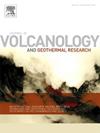Detecting explosive volcanism using global long-range infrasound data
IF 2.3
3区 地球科学
Q2 GEOSCIENCES, MULTIDISCIPLINARY
Journal of Volcanology and Geothermal Research
Pub Date : 2025-03-19
DOI:10.1016/j.jvolgeores.2025.108320
引用次数: 0
Abstract
Volcanoes have the potential to erupt abruptly, ejecting ash into the atmosphere and posing risks, among others, to civil aviation. Such explosive eruptions often occur unnoticed, complicating the air traffic management efforts of Volcanic Ash Advisory Centres (VAACs) of the International Civil Aviation Organization. Explosive eruptions are efficient sources of infrasound that, thanks to the low attenuation in the atmosphere, allow volcano monitoring at long (up to >1000 km) distances. The Volcanic Information System (VIS) is a recent framework for detecting eruptive events in near real-time (considering the slow propagation of infrasound), based on infrasound observations from one or several arrays of infrasound sensors. Several studies have already proved the efficiency of long-range infrasound monitoring and VIS in particular, but a systematic and global validation has not yet been done. In the current study, we investigate the reliability of VIS based on 10 years (2010–2019) of data provided by 16 infrasound arrays of the International Monitoring System operated by the Comprehensive Nuclear-Test-Ban Treaty Organization. The dataset contains eruptions with a Volcanic Explosivity Index (VEI) of 2 (mild explosions) to 4 (very energetic explosions with a high ash column). In order to estimate the rate of false positives, VIS records are compared with reports from the Global Volcanism Program. Our results show that VIS is well designed for large (VEI ) and long-lasting (Sub-Plinian/Plinian) events, as well as for highly repeated Vulcanian/Strombolian explosions. On the other hand, it typically misses single explosive, transient (few seconds) eruptive events. Good results on true detected events are obtained within 1000 km and up to 2000 km range under downwind propagation conditions. Unresolved ambiguity often remains for cases with small angular separation between volcanoes with respect to the infrasound array. We tackle the issue of azimuth resolution by considering volcanic sectors rather than single edifices. This approach can still provide critical information to the VAACs for triggering independent and extended analysis on ongoing volcanic eruptions.
利用全球远程次声数据探测爆炸性火山活动
火山有可能突然喷发,将火山灰喷射到大气中,并对民用航空等构成威胁。这种爆炸性喷发往往不为人注意,使国际民用航空组织火山灰咨询中心的空中交通管理工作复杂化。爆炸性喷发是次声波的有效来源,由于次声波在大气中的衰减很小,因此可以远距离(高达1000公里)监测火山。火山信息系统(VIS)是最近的一个框架,用于近实时探测喷发事件(考虑到次声传播缓慢),基于一个或几个次声传感器阵列的次声观测。一些研究已经证明了远程次声监测的有效性,特别是VIS,但尚未进行系统和全局的验证。在本研究中,我们基于全面禁止核试验条约组织运行的国际监测系统16个次声阵列提供的10年(2010-2019年)数据,研究了VIS的可靠性。该数据集包含火山爆发指数(VEI)为2(轻度爆炸)至4(高火山灰柱的高能爆炸)的火山爆发。为了估计误报率,VIS记录与全球火山活动计划的报告进行了比较。我们的结果表明,VIS对于大型(VEI≥3)和持久(亚普林尼期/普林尼期)事件以及高度重复的火山/斯特龙堡期爆炸设计得很好。另一方面,它通常会错过一次爆炸性的、短暂的(几秒钟)爆发事件。在顺风传播条件下,在1000公里和2000公里范围内的真探测事件都获得了很好的结果。对于相对于次声阵列而言,火山之间的角距较小的情况,仍然存在未解决的歧义。我们通过考虑火山板块而不是单个建筑来解决方位角分辨率问题。这种方法仍然可以为vaac提供关键信息,以触发对正在进行的火山喷发的独立和扩展分析。
本文章由计算机程序翻译,如有差异,请以英文原文为准。
求助全文
约1分钟内获得全文
求助全文
来源期刊
CiteScore
5.90
自引率
13.80%
发文量
183
审稿时长
19.7 weeks
期刊介绍:
An international research journal with focus on volcanic and geothermal processes and their impact on the environment and society.
Submission of papers covering the following aspects of volcanology and geothermal research are encouraged:
(1) Geological aspects of volcanic systems: volcano stratigraphy, structure and tectonic influence; eruptive history; evolution of volcanic landforms; eruption style and progress; dispersal patterns of lava and ash; analysis of real-time eruption observations.
(2) Geochemical and petrological aspects of volcanic rocks: magma genesis and evolution; crystallization; volatile compositions, solubility, and degassing; volcanic petrography and textural analysis.
(3) Hydrology, geochemistry and measurement of volcanic and hydrothermal fluids: volcanic gas emissions; fumaroles and springs; crater lakes; hydrothermal mineralization.
(4) Geophysical aspects of volcanic systems: physical properties of volcanic rocks and magmas; heat flow studies; volcano seismology, geodesy and remote sensing.
(5) Computational modeling and experimental simulation of magmatic and hydrothermal processes: eruption dynamics; magma transport and storage; plume dynamics and ash dispersal; lava flow dynamics; hydrothermal fluid flow; thermodynamics of aqueous fluids and melts.
(6) Volcano hazard and risk research: hazard zonation methodology, development of forecasting tools; assessment techniques for vulnerability and impact.

 求助内容:
求助内容: 应助结果提醒方式:
应助结果提醒方式:


